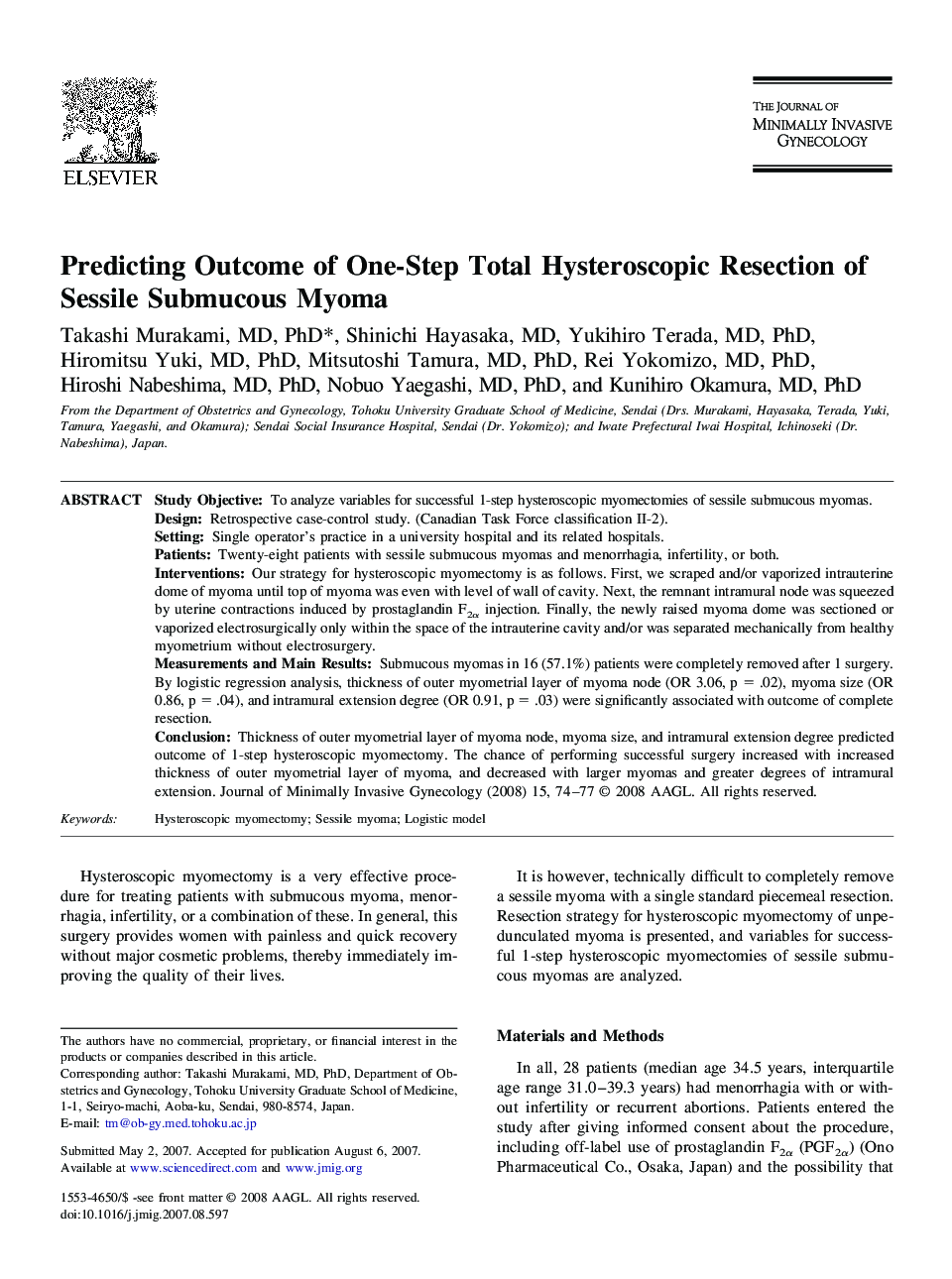| Article ID | Journal | Published Year | Pages | File Type |
|---|---|---|---|---|
| 3955138 | Journal of Minimally Invasive Gynecology | 2008 | 4 Pages |
Study ObjectiveTo analyze variables for successful 1-step hysteroscopic myomectomies of sessile submucous myomas.DesignRetrospective case-control study. (Canadian Task Force classification II-2).SettingSingle operator’s practice in a university hospital and its related hospitals.PatientsTwenty-eight patients with sessile submucous myomas and menorrhagia, infertility, or both.InterventionsOur strategy for hysteroscopic myomectomy is as follows. First, we scraped and/or vaporized intrauterine dome of myoma until top of myoma was even with level of wall of cavity. Next, the remnant intramural node was squeezed by uterine contractions induced by prostaglandin F2α injection. Finally, the newly raised myoma dome was sectioned or vaporized electrosurgically only within the space of the intrauterine cavity and/or was separated mechanically from healthy myometrium without electrosurgery.Measurements and Main ResultsSubmucous myomas in 16 (57.1%) patients were completely removed after 1 surgery. By logistic regression analysis, thickness of outer myometrial layer of myoma node (OR 3.06, p = .02), myoma size (OR 0.86, p = .04), and intramural extension degree (OR 0.91, p = .03) were significantly associated with outcome of complete resection.ConclusionThickness of outer myometrial layer of myoma node, myoma size, and intramural extension degree predicted outcome of 1-step hysteroscopic myomectomy. The chance of performing successful surgery increased with increased thickness of outer myometrial layer of myoma, and decreased with larger myomas and greater degrees of intramural extension.
